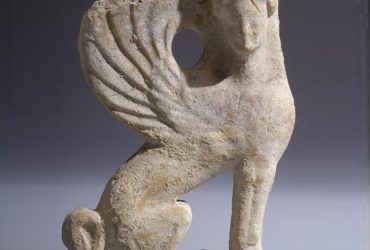Ancient World
About the Gallery
Sailing the Wine Dark Sea: Ancient Art of the Mediterranean

Referred to simply as “our sea” by the ancient Greeks and Romans, the Mediterranean has been a nexus of cultures from ancient times to the present. It is surrounded by the continents of Africa, Asia, and Europe, where the major cultures of Egypt, Greece, and Rome emerged in antiquity. These civilizations are notable for their long durations and contributions to many of the cultural underpinnings of Western society that still resonate in science, philosophy, literature, politics, and religion. Their influences were dispersed throughout the large territories they controlled or contacted, along with a wide range of material goods. Additionally, many smaller cultures inhabited this region and their exchanges and interactions left important imprints as well.
This gallery focuses on the artwork and artifacts produced over several millennia by those living in the ancient Mediterranean. Many works come from major cultures: funerary arts from Egypt; ceramics from Greece; and sculpture from Rome. These objects also attest to the rich environment created by networks of cultural interchange. Sculptures from Cyprus, an island cross-roads, show the intersection of Greek and Egyptian visual culture. Many Greek vases produced in the regions of Athens or Corinth were shipped widely, and often emerge whole from Italian tombs. Luxury goods like jewelry, metalwork, and perfume vessels exemplify how the taste of the elite drove trade across the region. In addition to giving clues on how these civilizations lived, these works allow us to stretch our imaginations about those who lived long ago and sailed what the poet Homer termed “the wine dark sea.”
Duke University Students in Professor Carla Antonaccio’s Greek Archaeology seminar contributed to the research and writing for the current installation in The Ancient World Gallery: Emma Buckingham, Drew Cabaniss, Laura Camp, Elizabeth Djinis, Alex Fowler, Sarah Hilker, Amanda Lazarus, Katie McCusker, Henrietta Miers, Jessica Pissini, Justin Sandulli, Katie Simmons, Katie Tardio, and Ana Wagner.
Contemporary Interventions within The Collection Galleries
Works of contemporary art from the Nasher Museum’s collection are on view in Wilson Pavilion, creating new conversations among historical works in The Collection Galleries. An early, breakthrough work by New...
Published



